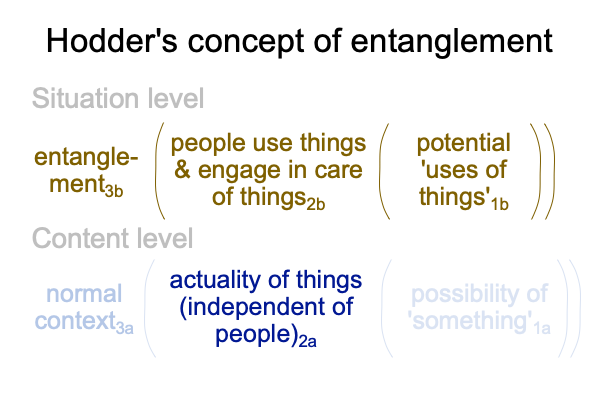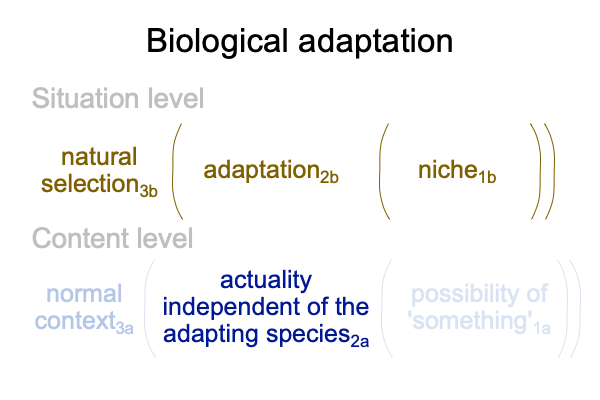0024 Here is a picture of Hodder’s general theory of entanglement.

0025 Here is a diagram of the relational structure of biological adaptation.

0026 Notice any similarities?
Does this summarize Hodder’s book?
Yes, it does, because Hodder, as a scientist, limits his vision to sensible construction.
No, it does not, because the two diagrams are different, even though they appear remarkably similar.
0027 There are two actualities.
Things2a occupy the slot for actuality2a in the content-level of both two-level interscopes.
The ways that people use things and take care of them2b occupies the slot for actuality2b on the situation-level, for the normal context of entanglement3b.
Biological adaptations2b occupies the slot for actuallity2b on the situation level, for the normal context of natural selection2b.
0028 What does that imply?
The logics of normal contexts3 include exclusion, complementarity and alignment. I can rule out the first and the third options, leaving me with the second.
Entanglement2b complements natural selection2b.
Similarly, the potential ‘uses of things’1b complements the biological concept of niche1b.
0029 Where are we heading?
Are we heading to the realization that people’s use of things, as well as their care for things2b, complements the biological notion of adaptation2b?
Are we are heading to an awareness that what Hodder calls “entanglement”3b may be an adaptation2b into the human niche1b?
If the answers are “yes”, then perhaps the concept of biological adaptation2b relies on (and is therefore, formatted by) our innate capacity for using and caring for things2b.
0030 Does Darwin pick up on that?
What do natural selection and selective breeding by humans have in common?
